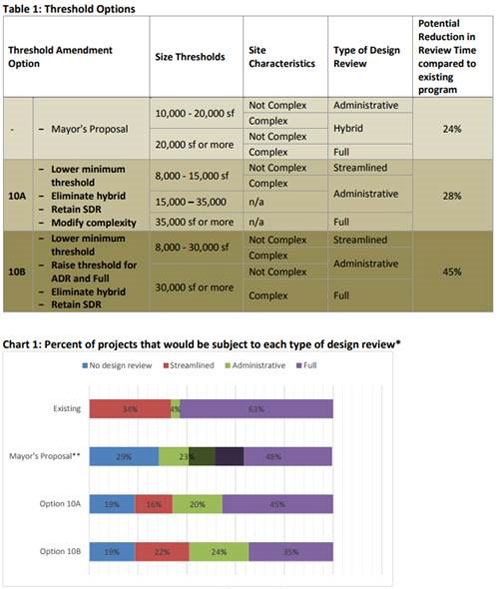The City Council’s Budget Committee held the first of two public hearings on the 2018 budget last night. The second hearing will be on November 1.
Next week the City Council’s Budget Committee will begin the Issue Identification portion of its review of the Mayor’s proposed 2018 budget, with meetings scheduled from October 12 to October 17. In these meetings, Council Central staff will raise issues for select departments regarding the proposed budget; Councilmembers can also raise issues (what has been called “Issue ID” during previous years).
A single Councilmember can raise an issue for discussion in staff memos and presentation before the Budget Committee. This is a new step introduced last year by Mayor Burgess during his time a chair of the Council’s Budget Committee; the deadline for Councilmembers to submit issues is noon on Monday, October 9.
Here’s a link to the Budget Committee schedule.
Alki Public Safety and Health Survey Results
1100 people answered the Alki Public Safety and Health Survey. Thanks to all of you who responded.
620 replies were from Alki, and 197 from Admiral. In both neighborhoods, the biggest concern was Noise from Modified Vehicle Exhaust Systems.
Problems could be rated from 1-5, with 5 indicating the highest level of concern. Here’s the overall results:
- 4.32 – Noise from Modified Vehicle Exhaust Systems
- 4.29 – Distracted Driving
- 4.13 – Speeding
- 4.04 – Noise from Vehicle Sound Systems
- 3.65 – Unmuffled Compression Braking Noise
- 3.65 – Cruising
- 3.46 – Vehicle Tire Noise
- 3.33 – Vehicle Idling
- 2.97 – Non-Visible Front and Rear License Plates
- 2.94 – Vehicle Window Tinting
We’ve put the survey results online here. You can click on neighborhoods for the specific breakdown for each of the categories in each neighborhood, along with a bar graph showing the distribution of results for each item.
We’ve shared with the Seattle Police Department, and look forward to discussing these results and next steps with the community.
On Monday the Council voted unanimously for changes to the Design Review Program. Previously it was heard in the Planning, Land Use, and Zoning committee on each 8/1, 8/15, and 9/19 and there was a public hearing on 9/11.
Here is an update on the amendments that were made in committee that I sponsored that, taken together with our amendments sponsored by other Councilmembers, significantly changed the Executive’s proposal that I heard concerns about from many of you:
Here is a description of the changes I that I promoted by sponsoring amendments that successfully passed:
Change 1:
- The Mayor’s proposal: A new 10,000-square foot threshold for design review project eligibility. That threshold would have removed a significant number of projects that the community should have input on. Under the Mayor’s proposal 29% of projects currently subject to Design Review would have no longer received any design review at all.My amendment: 10A in the table below reflects the changes to the proposed thresholds. Under this new proposal just 19% of projects that currently receive design review will no longer be subject to design review and 45% of all projects that currently receive design review will still receive Full Design Review. Many other projects will continue to receive Streamlined or Administrative Design Review.
Change 2:
- The Mayor’s proposal included both a Hybrid Design Review process and a Hybrid Pilot Project. No one seemed to like it, neither community members nor developers.My amendment: Removed the Hybrid Design Review Process and the Hybrid Pilot Project.
Change 3:
- This amendment, derived by a suggestion from District 1 resident and Morgan Community Association President Deb Barker, was especially designed for projects in areas that are rezoned from single-family to LR1 and LR2. I want to ensure that neighborhoods that are rezoned for greater density in the future will also have a greater say in how the new development occurs in their community. Areas that are rezoned from single-family to Low Rise 1 and Low Rise 2 and are between 5,000 and 8,000 square feet will go through Streamlined Design Review. Areas that are rezoned from single-family to Low Rise 3 and are between 5,000 and 8,000 square feet will go through Administrative Design Review.A description of the terms Streamlined Design Review, and Administrative Design Review can be found here.
I appreciate all of the people who took the time to write to me and share their concerns about Design Review, I believe the process and your advocacy has led to a good compromise and a better proposal than what we saw from the Executive.
Public Comment Now Open for the Accessory Dwelling Unit Environmental Review Process
The city has begun the environmental review process to explore the potential impacts of removing barriers to building accessory dwelling units (ADUs). ADUs are small, secondary dwelling units inside, attached to, or in the yard of a single-family house. ADU’s include both attached and detached dwellings such as backyard cottages and separate but attached in-law apartments. The current proposal involves removing barriers to ADUs by eliminating the existing off-street parking and owner-occupancy requirements, and changing some development standards that regulate the size and location of backyard cottages.
The City of Seattle is seeking public comment on the initial phase of the environmental review process. Public Comment will be accepted until 5:00pm on Wednesday November 1, 2017. There are several ways that you can give input:
- online http://www.seattle.gov/council/adu-eis
- by email at ADUEIS@seattle.gov
- by mail to Aly Pennucci, Council Central Staff, PO Box 34025, Seattle, WA 98124-4025
- in person at our two public scoping meetings
- October 17, 2017, 6:00-7:30 p.m. at High Point Community Center, 6920 34th Ave SW
- October 26, 2017, 6:00-7:30 p.m. at Hale’s Ales (in the Palladium), 4301 Leary Way NW


